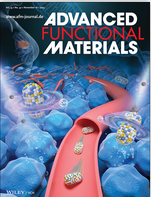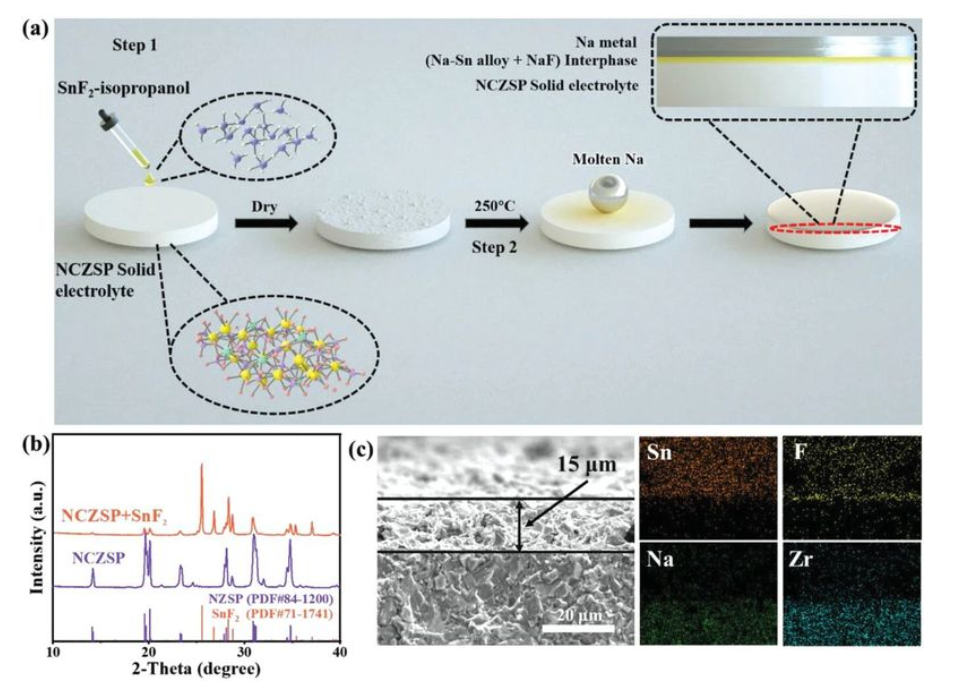 论文题目:SnF2-Induced Highly Current-Tolerant Solid Electrolytes for Solid-State Sodium Batteries
论文题目:SnF2-Induced Highly Current-Tolerant Solid Electrolytes for Solid-State Sodium Batteries
论文作者:Zhendong Yang, Letian Chen, Haoyang Jiang, Xinghui Liang, Jinping Wei, Zhaojun Xie, Bin Tang*, Zhen Zhou*
发表期刊:Adv. Funct. Mater.2023, 33, 2306558.
Abstract
Solid-state sodium batteries have garnered considerable interest. However, their electrochemical performance is hampered by severe interfacial resistance between sodium metal and inorganic solid electrolytes, as well as Na dendrite growth within the electrolytes. To address these issues, a uniform and compact SnF2 film is first introduced onto the surface of the inorganic solid electrolyte Na3.2Zr1.9Ca0.1Si2PO12 (NCZSP) to improve contact through an effective and straightforward process. Through experiments and computations, the in situ conversion reaction between SnF2 and molten Na is adequately confirmed, resulting in a composite conductive layer containing NaxSn alloys and NaF at the interface. As a result, the interfacial resistance of Na/NCZSP is significantly decreased from 813 to 5 Ω cm2, and the critical current density is dramatically increased to 1.8 mA cm−2, as opposed to 0.2 mA cm−2 with bare NCZSP. The symmetric cell is able to cycle stably at 0.2 mA cm−2 for 1300 h at 30 °C and exhibits excellent current tolerance of 0.3 and 0.5 mA cm−2. Moreover, the Na3V2(PO4)3/SnF2-NCZSP/Na full cell displays excellent rate performance and cycling stability. The SnF2-induced interlayer proves significant in improving interfacial contact and restraining sodium dendrite propagation, thus promoting the development of solid-state sodium batteries.

